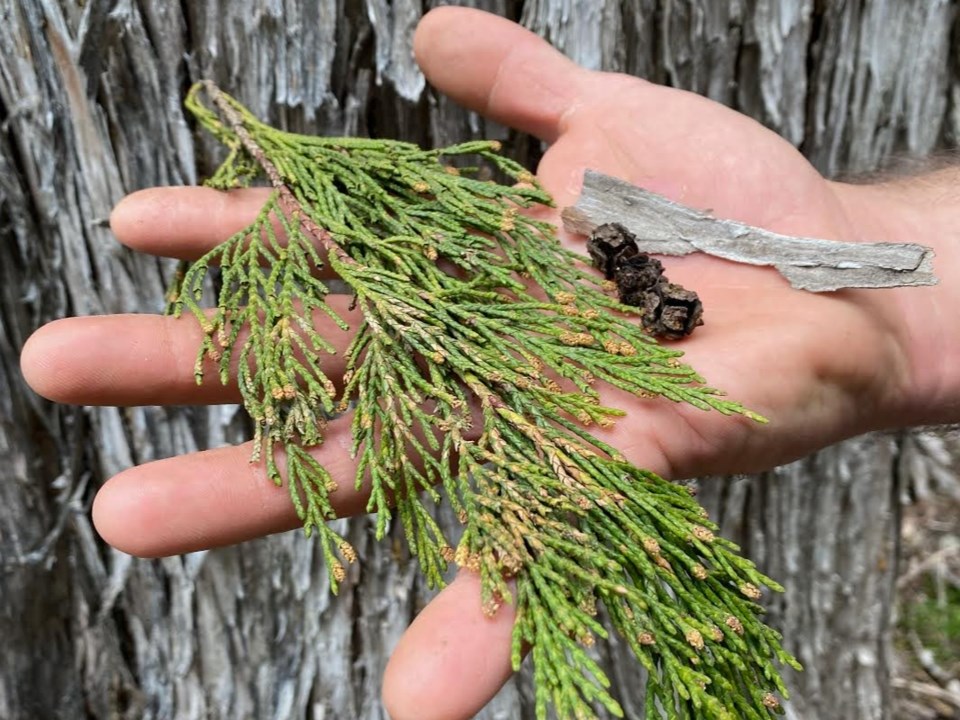Before moving to Whistler, I had become interested in trees. I wanted to learn everything that I could about the different species that governed the forests of the Coast Mountains.
A month before I arrived in November, I signed up for a project with an organization called Adventure Scientists to sample trees in British Columbia. The project I was working on was illegal timber tracking. The goal was to take leaf, wood, and cone samples of trees—all prized in the illegal timber market—and use the DNA to create a database to track genetic signatures.
Once the samples are collected and sent into the lab, researchers will use DART (Mass Spectrometry-Data Analysis in Real-Time) and genetic analysis to understand natural variation within a species.
Both of these technologies will create a fingerprint of the geographic origin of a sample, with the hope that we can create a database to effectively combat the illegal timber market.
The tree that I set out to sample was called Chamaecyparis nootkatensis, commonly referred to as the Alaska cedar or yellow cedar. From the B.C. coast all the way up to Prince William Sound, these yellow cedars are one of the only trees to grow from the waterline up to the alpine treeline.
If you have ever skied Whistler Mountain, you might have seen some of these stunning trees lining the Garbanzo chair—they are extremely skinny, with shaggy grey bark, and droopy yellowish needles.
Now you might be wondering, why do we care so much about protecting yellow cedars? First of all, their durability, insect resistant qualities, and unique yellow wood colour make them incredibly prized in the construction industry. And as you might have already guessed, climate change is threatening these majestic trees.
In Alaska, studies have found that yellow cedars depend greatly on coastal snowpacks to insulate their roots. Increasing temperatures across the globe have gradually melted these snowpacks, causing trees to experience freeze damage and subsequent die-offs.
While the species has not yet been formally designated as endangered, as the climate crisis progresses, scientists project seeing more and more die-offs of yellow cedars.
After days of watching identification guide videos, looking for trails, and spending hours on the B.C. parcel map, I was finally able to grab my sample kit and start looking for trees. The first spot that I tried was the Rainbow Falls loop trail behind Alta Lake. Unfortunately, after about an hour of walking through the forest, no trees were to be found.
A couple of weeks later, I headed to the Callaghan to look for more trees. Driving in, I spotted tons of beautiful old-growth yellow cedars growing on the side of the road and eventually, after a couple of hours of walking around, I found the perfect tree for sampling. After 30 minutes of trying not to fall into a tree well while trying to take a sample, I ended up with two samples and ten absolutely frozen fingers.
I’m planning on continuing my search for these trees to help Adventure Scientists reach their goal of 900 Alaska yellow cedar samples.
So, the next time you are headed up the mountain for a ski or a hike, look out for tree trunks with shaggy, gray strips of bark and droopy, curtain-like branches!
Naturespeak is prepared by the Whistler Naturalists. To learn more about Whistler’s natural world, go to Whistlernaturalists.ca.


.jpg;w=120;h=80;mode=crop)

